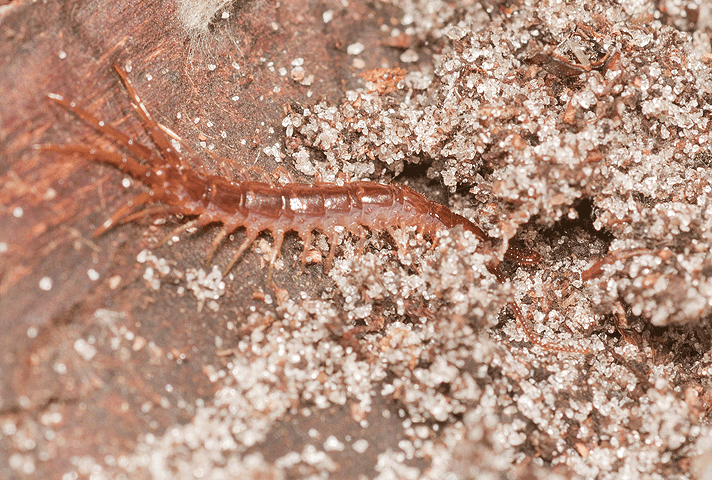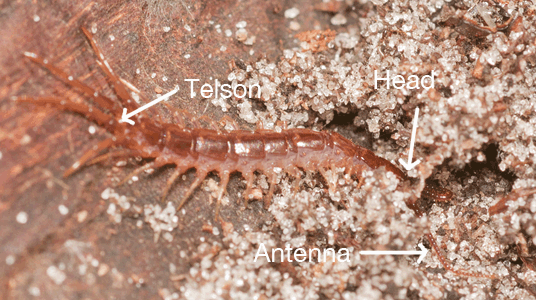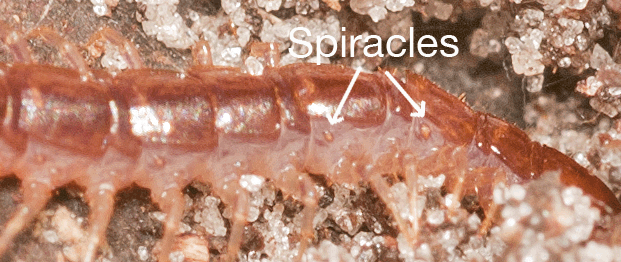Class Chilopoda (Centipedes) in the Christopher B. Smith Preserve
Chilopod Characteristics: A centipede is an elongated arthropod, with a rounded or flattened head, with a pair of antennae. At the base of the antennae, are organs that sense vibrations. An individual has 15 or more segments, each with one pair of legs. The legs of the first segment are modified into forcipules (venom claws), used to paralyze prey. Additional pairs of legs are slightly longer than the pair immediately in front of them. The final segment is a telson, which includes the openings of reproductive organs. Reproduction is achieved when a male deposits a spermatophore for a female to find and place with her eggs.
There are five orders of centipedes, separated by their structural changes during development, structural differences in their eyes (some have compound eyes, while others have only simple eyes), and number and placement of spiracles (openings that connect to a tracheal system for breathing). There are thought to be about 8,000 species of centipedes in the world; 3,000 have been described.
Centipedes are found in a wide variety of environments including Arctic locations, tropical rainforests, and deserts. Some live in caves, inside logs, in soil; and under leaf litter, dead wood, and stones. They require moist micro-habitats because they do not have waxy cuticles to prevent water loss from the skin, like insects and arachnids.
Interactions in the Smith Preserve: Centipedes are predators that eat a variety of other animals, mostly at night, and they are part of the diet of mice, lizards, beetles, snakes, and ants.
Order |
Family |
Species Name |
Common Name |
Geophilomorpha |
Geophilidae |
Geophilus mordax ? |
|
Lithobiomorpha |
Unknown |
Unknown |
|
Scolopendromorpha ? |
Scolopendridae? |
Scolopendra sp. ? |
Order Geophilomorpha ... Family Geophilidae Geophilus mordax ? ... Soil Centipede
|
Order Lithobiomorpha ... Unknown Family Unknown Species ... Stone Centipede
|
Order Scolopendromorpha ... Family Scolopendridae Scolopendra sp. ? ... Tropical Centipede ?
|
© Photographs and text by Susan Leach Snyder (Conservancy of Southwest Florida Volunteer), unless otherwise credited above.

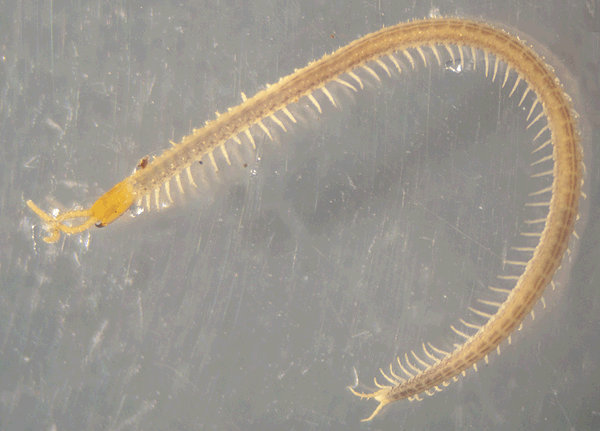 On March 4, 2015, this 20 mm long centipede was found in leaf litter under
On March 4, 2015, this 20 mm long centipede was found in leaf litter under 
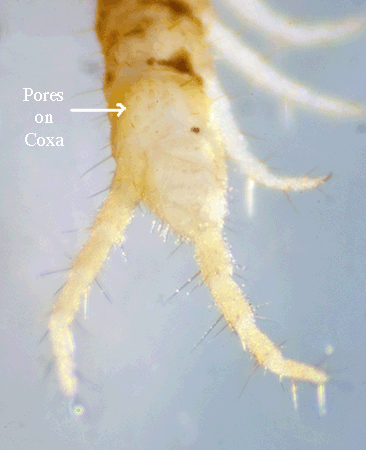

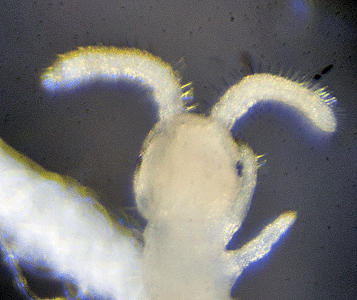
 It was isolated from the leaf litter using a Berlese funnel. Photographs were created using photomicroscopy.
It was isolated from the leaf litter using a Berlese funnel. Photographs were created using photomicroscopy. 